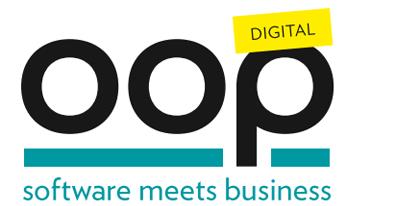
RÜCKBLICK AUF DAS PROGRAMM 2021
The Art of the Necessary
How much can you separate what you are building from how you are building it? This becomes an increasingly relevant question with IT moving from building systems to cultivating ecosystems. At the enterprise architecture level, one of the challenges nowadays is to decide which constraints to put in place to get a robust and evolvable landscape of interacting components, while at the same time it is important to minimize these constraints so that teams and units have some autonomy, and that the overall architecture can evolve continuously.
Target Audience: Interest in enterprise & software architecture and in digital transformation
Prerequisites: None
Level: Advanced
Extended Abstract:
In this presentation, we look at this interesting challenge from the standpoint of APIs, and how they can help to reduce the constraints to the necessary ones, while still resulting in an effective architecture.
One of the main challenges of enterprise architecture and software architecture today is to move from building systems to cultivating ecosystems. With business and IT moving closer together, and the demands on businesses to become better at changing and adapting, this introduces new constraints into architecture that looked different when the main goals were mostly centered around being secure, robust, and efficient.
Ecosystems exhibit different qualities from systems in the sense that they afford more autonomy to components, while at the same time introducing models of fitness and continuous change. With today's demand on business and IT to become faster and more effective at changing, the question is how to reflect those demands in new practices and models for architecting. We argue that one way of doing this is to focus on constraints, and to also focus on minimizing the constraints so that components can adapt and evolve as freely as possible.
We present a model of how to address API issues in the four areas of strategy, program, platform, and products. The goal of this model is to have as much coordination and alignment between these areas as necessary. The way this is done is by having clearly structured guidelines that represent and communicate the constraints, and that always clearly explain the rationale, the constraint itself, as well as possible ways how to comply with the constraint and how to test for compliance. The goal of this is to create loose coupling while still having a structure that allows governance. While in practice it would be ideal to fully automate all tests so that governance can be done in a full self-service model, so far we have concluded that automated testing is a good goal to have, but that some constraints still need a process of human review and approval.
Erik Wilde works in the Catalyst team at Axway. The team's mission is to help customers do the right things in the API and digital transformation space. Erik has been working in a variety of software companies, always focusing on questions of architecture and strategy. Erik's background is in computer science and he holds a Ph.D. from ETH Zurich, but over the course of his career it has become increasingly clear to him that technology rarely is the factor holding back organizations. So now he is helping organizations with their strategy to make sure that they are successful on their journeys.
Vortrag Teilen

